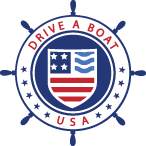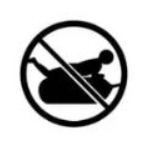Water Skiing & Towed Water Sports Safety Guidelines
Every year, nearly forty percent of Americans who go boating also participate in some form of towed watersport. Waterskiing and wakeboarding take some practice to master, both for the person being towed and the boat operator. Tubing is easier, as long as you use the right gear.
Regardless of your age or level of experience, knowing the rules and putting safety first can make the difference between a fun day and a disaster. Learn the safety rules for towed water sports so you can take to the water with confidence!
Risks associated with towing sports
Hundreds of injuries and more than 10 deaths associated with towed water sports are reported to the US Coast Guard every year. The most common causes of these tragedies are:
- Spotters who weren’t paying attention
- Boat operators who weren’t paying attention
- Inexperience
- Mechanical failure
- Alcohol (Note: It is illegal to operate a boat under the influence in the US)
United States federal safety laws for towing sports
Everywhere in the United States, a person being towed behind a vessel on water skis or any other device is legally obliged to wear a USCG approved life jacket that meets federal standards for wearable PFDs.
It is illegal to wear an inflatable PFD when wakeboarding, tubing, waterskiing or engaging in any other activity that involves being towed. New life jacked labels clearly indicate when they are not suitable for towing sports with the following symbol:
There are other rules that apply throughout the country:
- There must be at least 2 people in the boat while a third is being towed. One person will operate the vessel, and the other will be the lookout. The lookout must be at least 13 years old and capable of observing the person being towed and rendering assistance as needed, for example, interpreting hand signals or throwing the person a flotation device.
- Check your boat’s capacity plate. People being towed are included when calculating your boat’s capacity. Any vessel used to tow must be capable of carrying at least three people. If two or more people are being towed, you may even need more than one observer. Exceptions can be granted through a marine event permit.
- You are responsible for using appropriate equipment that is in good condition, including a towing rope that is the right length, usually over 20 feet.
- All people involved in the activity may not demonstrate behavior that endangers or is likely to endanger any person or property. Accidents must be reported to the State reporting authority according to their severity and whether they legally constitute a boating accident.
- Boaters must obey State-specific rules regarding what time of day they are allowed to perform towed water sports. This is usually between sunrise and sunset.
- You must use appropriate signaling devices depending on the State you are in, which may include a water ski flag and navigation lights.
Rules for performing towing sports within National Parks
Towing sports are governed by separate rules if they take place on waters within the jurisdiction of the National Parks System. Towing activities are only allowed on designated waters, and rules may vary according to current conditions. You need a permit to tow a person using a parasail, hang-glider or other airborne device in a U.S. National Park.
State-specific rules and regulations for water skiing and tubing
In addition to the general rules listed above, each State has the right to enforce other local laws. In general, these regulations fall under three categories:
- Does your state require a skier to wear a U.S. Coast Guard-approved PFD?
- Are self-propelled skis allowed to be used in your state?
- Does your state require the use of a skier down flag?
Refer to the United States Coast Guard State Boating Laws to see which rules apply in your area.
Safety tips for towing tubes, wakeboards and water-skis
Here are some additional recommended safety tips for enjoying water towing activities wherever you are:
- Use the right size and type of boat: For some towing activities, like wake surfing, you need to use a boat with an inboard motor.
- Know your hand signals: There are official hand signals that water skiers use to signal to people on the boat. Learn and use these, or come up with agreed signals before leaving shore and use those instead.
- Check your equipment: Make sure your rope is long enough (at least 20 feet) and in good condition. Verify that the transom eyes are tightly attached. Refer to your owner’s manual for information about correctly inflating tubes, and other safety facts related to your equipment.
- Choose an area where towed sports are allowed: There must be at least 100 feet of open water on each side of your boat, and 3,000 feet of unobstructed waterway in front of your boat. There should be no obstructions above or below the water, including docks, rocks, sandbars, pilings, or anything else that could ground your vessel or injure the person/people being towed.
- Wear a USCG-approved life jacket: This applies to people in the boat and people being towed, including children.
- Speed up and slow down safely: Always verify that the towable device is following your boat or slowing at the same rate as the boat. When you drop off a water-skier, keep your distance and let the person swing around toward the shore or dock so both the boat and the skiers can avoid touching bottom in shallow water.
- Make safe turns: Always keep in mind that the person being towed will not follow the boat directly. The ‘slingshot effect’ occurs when the boat turns quickly and the person being towed continues in the same direction, across the wake and potentially toward a hazard.
- Everybody should keep a lookout: In addition to a spotter who is responsible for watching the person being towed, the boat operator is responsible for staying aware of the path of the boat, other boating traffic and all signals and signage.
Learn more about safe boating with Drive A Boat USA
Did you know that boat operators who have not taken a safety course are more than five times more likely to have an accident? Boating rules are easy to learn, and they could save your life.
Become a responsible boater and know the law! Get your state-approved boating license today from Drive A Boat USA in New York, California and Florida.


